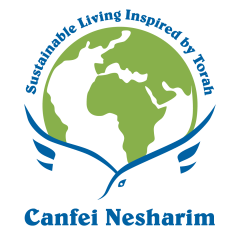A Program for Children Ages 8 – 12
Preparation
The Scavenger Hunt Checklist is also required to complete this activity.
This program is designed for upper elementary school or middle school children to be held either for families in shul on a Sunday, synagogue youth groups, or for summer camps.
The purpose of this activity is to have the children learn about the significance of the 17th of Tammuz as it relates to becoming aware of environmental warning signs all around us. The aim is for the children to heed these warning signs by beginning to think about their responsibility to the environment and to hopefully begin an action to plan to help make a difference.
Discussion
Tell the children about the 17th of Tammuz and the Three Weeks. Ask them what they know about this time.
Instruct and elicit answers such as:
-The 17th of Tammuz commemorates five calamities:
* The first tablets were broken in the desert.
* The offering of the daily sacrifice was suspended in the time of the first Temple.
* The wall of the city breached in the time of the second Temple.
* Apustamus, the wicked, burned the Torah during the time of the second Temple.
* An idol was placed in the sanctuary.
-It is a minor fast day.
-It begins a period of mourning called “The Three Weeks” culminating with the solemn major fast day of Tisha B’Av.
-Restrictions include listening to live music, holding weddings, shaving or getting haircuts, and reciting Shehechiyanu.
Discuss how the purpose of any fast day is to examine our deeds and repent. We are called on to change our ways and come back to ways of the Torah, coming closer with Hashem. The 17th of Tammuz, as minor fast day and the beginning of the period of mourning, The Three Weeks, serves as a time to wake up and heed the warning signs that Hashem gives us to prevent our spiritual downfall and physical destruction.
Today we are facing an environmental crisis which presents us with numerous warning signs. These warning signs are a call for us to wake up and change our ways before we cause irreparable harm to our planet. We are in danger of over-using the precious resources (such as clean air, clean water, trees, fish, and healthy foods) that Hashem has granted us, which would make life much more difficult for us and especially for people who already live in poverty.
This exercise is an opportunity to identify warning signs and signs of teshuva in response to the warnings, as it relates to protecting the environment.
Have the children think of “warning signs” they have seen in the environment and write answers on a chart. Answers should include signs of pollution by man. Next, have the children think of environmentally friendly things they have seen in the environment and write the answers on the other side of the chart. This second category aims to give the children hope that many people are in fact changing their environmentally harmful ways and may serve to encourage them to do the same. (See scavenger hunt activity below for ideas of answers to encourage for the chart.)
(For more information on the Three Weeks and the 17th of Tammuz, visit our Warning Signs page for the Three Weeks. Environment Canada also has some interesting educational resources on teaching children about the environment, pollution, and making a difference.)
Activity
Go over the list of items for the scavenger hunt with the children.
Discuss with them the significance of the items (i.e., Why is it bad to find an aluminum can? The can was not recycled, it is not pleasant to look at garbage on the ground, it may ruin the natural ecosystem, etc.). Some of the items may require or initiate further study.
Children may also get credit for finding environmentally friendly “signs” that indicate that our society is doing teshuva, finding its way back to our Jewish and collective responsibility to respect nature and take care of the environment. You may want to delete items or add to the list.
Have the children either split up into small groups or pairs to complete the scavenger hunt with adult supervision or participation. The groups should split up at an outdoor area most likely to find the list of items for the game. The group at the end of the allotted time period (perhaps 30 to 45 minutes) that has found the most items on the list is the winner. You may want to provide eco-friendly door prizes for the winning group(s).
(One item that is part of the scavenger hunt is a search for “invasive species,” non-native plants which can do damage to a local area by choking out native wildlife. Invasive species can be a particularly interesting Warning Sign if you are in a local natural area and know what to look for. Learn more about invasive species.)
Thank you to the Pollution Patrol Scavenger Hunt from Environment Canada for many of the above list ideas.
Follow Up Discussion
Ask, “What we can do to help the environment? Why is it everyone’s responsibility?”
Each child should say one thing he or she will personally do to “wake up” and change in the merit of the 17th of Tammuz.
Plan an optional group project to help the environment.
